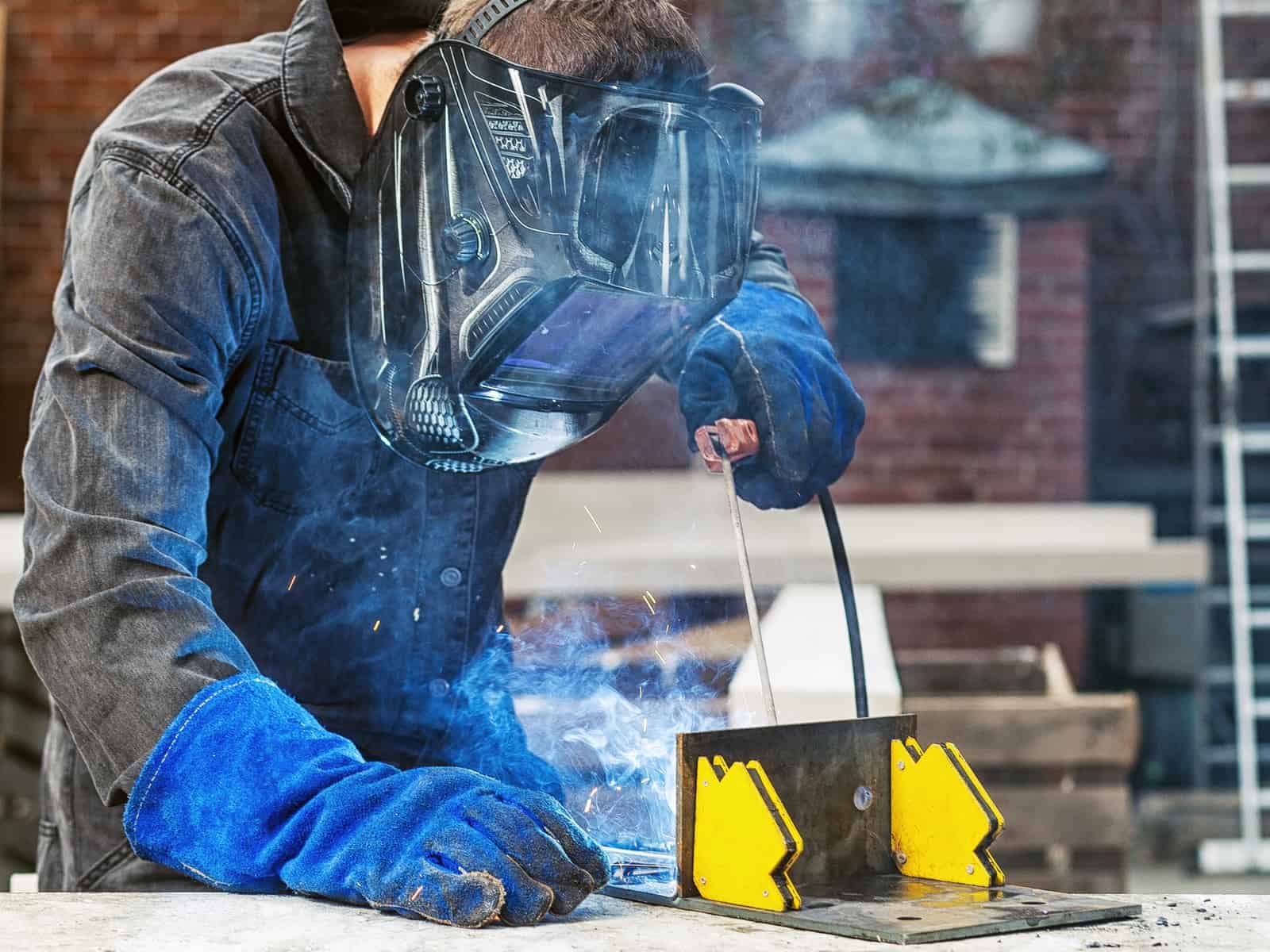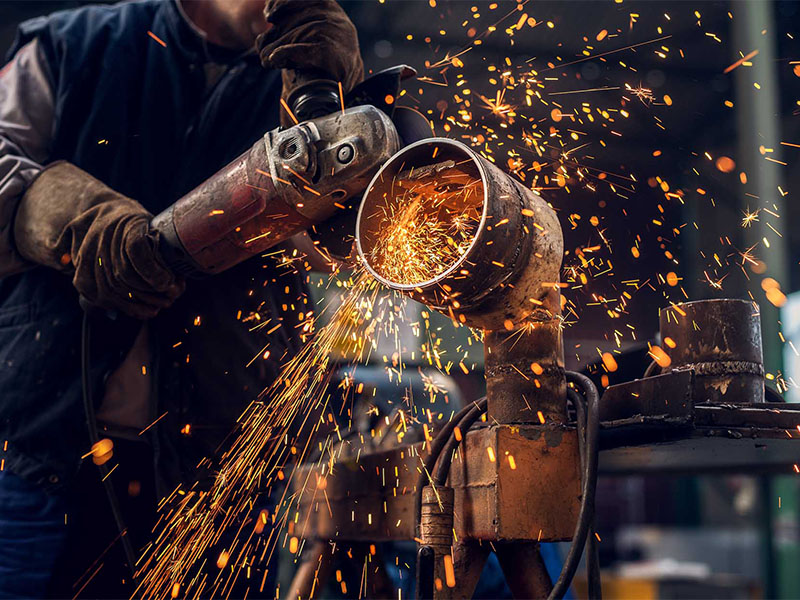Immediate responses to weld misalignment in Montana Mobile Welding and Repair Fabrication
Typical Welding Repair Service Issues and Exactly How to Address Them Effectively
Welding repair work often experience a series of concerns that can jeopardize the honesty of the end product. Common problems include insufficient penetration, porosity, and misalignment, amongst others. Each defect presents unique obstacles that need particular approaches for resolution. Understanding these concerns is essential for welders aiming to enhance their abilities and end results. This conversation will certainly check out these usual welding repair problems and efficient approaches to address them.
Insufficient Penetration
Insufficient infiltration occurs when the weld metal falls short to totally fuse with the base product, leading to weak joints and potential architectural failures. This issue frequently comes from not enough heat input, incorrect electrode angle, or inappropriate welding speed. Welders may come across poor penetration because of a miscalculation of the required criteria for a specific material density or kind. In addition, contamination on the base material's surface can impede reliable bonding, worsening the issue. To attend to inadequate infiltration, welders ought to guarantee proper setups on their devices and preserve a tidy work surface. Regular assessment of welds is suggested to identify any kind of deficiencies early, enabling for timely corrections and the avoidance of endangered structural stability in welded settings up.
Porosity
Porosity is an usual flaw in bonded joints that materializes as small gas bubbles entraped within the weld steel. This issue can compromise the stability of the weld, causing reduced stamina and possible failure under stress and anxiety. Belgrade Welding. Porosity commonly arises from contamination, wetness, or inappropriate welding techniques, which enable gases to leave right into the liquified weld pool. To address porosity, welders must assure correct surface prep work, maintain a tidy workplace, and make use of suitable welding parameters. In addition, choosing the right filler material and protecting gas can minimize gas entrapment. Regular evaluation and testing of welds can aid identify porosity early, guaranteeing prompt corrective activities are taken, consequently preserving the quality and reliability of the welded structure
Misalignment
Imbalance in welding can emerge from numerous aspects, including improper arrangement and thermal development. Recognizing the source is important for effective resolution. A number of correction techniques are available to straighten parts and ensure architectural integrity.
Reasons of Imbalance
Welding imbalance frequently originates from a variety of underlying problems that can endanger architectural integrity. One primary reason is incorrect fit-up of elements before welding, which can cause voids and irregular surface areas. Variations in thermal expansion throughout the welding process can likewise lead to distortion, especially if the materials being joined have different coefficients of development. Furthermore, inadequate fixturing and securing may fail to hold parts firmly in area, leading to activity during welding. Inadequately kept equipment, consisting of welding machines and tools, might introduce inconsistencies in the weld grain, further adding to imbalance. Lastly, operator mistake, stemming from insufficient training or experience, can also play a substantial function in producing misaligned welds.
Correction Methods Offered
Addressing misalignment efficiently calls for a mix of restorative methods customized to the particular problems available. One usual method is making use of jigs or components to hold elements in the appropriate setting during welding, guaranteeing consistent alignment. In addition, pre-heating the products can help in reducing distortion and boost fit-up. For significant imbalance, mechanical realignment methods, such as using hydraulic jacks or clamps, can be utilized to deal with the setting prior to welding. Post-weld warmth therapy may likewise be needed to ease anxieties brought on by imbalance. Ultimately, cautious assessment and modification throughout the setup phase can protect against imbalance problems from becoming substantial issues, promoting a smoother welding procedure and enhancing general structural integrity.
Distortion
Distortion is a common challenge in welding that can develop from various aspects, including irregular heating & cooling. Comprehending the sources of distortion is important for applying reliable avoidance strategies. Addressing this problem not only boosts architectural integrity but also enhances the total quality of the weld.
Causes of Distortion
When subjected to the extreme heat of welding, materials often go through changes that can bring about distortion. This sensation mostly emerges from thermal development and contraction during the welding procedure. As the weld location warms up, the product increases; upon cooling, it acquires, which can produce interior stress and anxieties. Furthermore, uneven home heating across a workpiece can exacerbate these anxieties, leading to warping or flexing. The kind of material also plays a substantial duty; steels with differing thermal conductivity and coefficients of expansion may respond in different ways, leading to uncertain distortions. Inadequate joint layout and poor fixturing can contribute to misalignment throughout welding, increasing the possibility of distortion. Recognizing these causes is vital for effective welding fixing and avoidance approaches.
Avoidance Techniques
Efficient avoidance methods for distortion during welding focus on managing warmth input and guaranteeing correct joint layout. Preserving a constant warm input assists to decrease thermal growth and contraction, which can cause distortion. Utilizing techniques such as preheating the work surface can likewise lower the temperature slope, advertising consistent home heating. In addition, picking appropriate joint styles, such as T-joints or lap joints, can enhance stability and reduce anxiety concentrations. Implementing appropriate fixturing to protect the work surfaces in area additionally aids in maintaining positioning throughout the welding process. Staggered welding sequences can disperse warmth extra evenly, avoiding localized distortion. By applying these methods, welders can greatly reduce the likelihood of distortion and enhance the overall top quality of their welds.
Cracking
Breaking is an usual issue come across in welding repair services, often resulting from different aspects such as inappropriate cooling prices, material choice, or poor joint prep work. The occurrence of fractures can considerably endanger the honesty of the weld, resulting in possible failings throughout procedure. To address this problem, welders must first assess the source, making certain that products are suitable and properly chosen for the certain application. In addition, controlling the cooling rate throughout the welding procedure is essential; rapid air conditioning can generate aws d1 2 tension and result in breaking. Correct joint design and preparation likewise add to decreasing the risk. Implementing these approaches can improve weld quality and resilience, ultimately decreasing the probability of splitting in finished weldments.

Insufficient Blend
A significant issue in welding repair work is insufficient fusion, which occurs when the weld metal does not adequately bond with the base material or previous weld passes - Montana Mobile Welding and Repair Belgrade Welding. This issue can bring about weaknesses in the joint, possibly jeopardizing the stability of the welded framework. Factors contributing to insufficient combination include inadequate warmth input, incorrect welding method, and contamination of the surfaces being joined. To resolve this problem efficiently, welders need to ensure correct pre-weld cleaning and surface area preparation, as well as adjust their welding parameters to achieve adequate infiltration and fusion. Normal evaluation throughout the welding process can additionally help recognize insufficient fusion early, enabling timely rehabilitative steps to boost the general quality of the weld
Overheating
While welding repair work can improve structural stability, overheating provides a considerable obstacle that can lead to material destruction. Too much warm during welding can alter the mechanical homes of metals, resulting in reduced strength, enhanced brittleness, and bending. This phenomenon is particularly critical in high-stress applications where structural dependability is vital. Identifying overheating can entail aesthetic inspections for staining or distortion, in addition to monitoring temperature throughout the welding procedure. To mitigate the threats connected with getting too hot, welders should use appropriate techniques, such as regulating warmth input, adjusting travel rate, and using appropriate filler materials. In addition, implementing pre- and post-weld warmth therapies can help restore material residential properties and boost the overall quality of the repair work, making sure lasting efficiency and safety and security.
Regularly Asked Concerns
What Are the Usual Signs of a Welding Problem?

Just How Can I Examine My Welds for Quality?
To examine welds for high quality, one can make use of visual inspections, ultrasonic screening, and radiographic techniques. Each technique ensures architectural honesty, determines flaws, and verifies adherence to defined criteria, ultimately boosting the integrity of the bonded joints.
What Security Precautions Should I Take While Welding?
When welding, one need to focus on safety and websites security by wearing proper individual safety tools, making certain proper ventilation, securing flammable materials away, preserving a tidy work area, and recognizing surroundings to avoid mishaps and injuries.
Can I Fix a Weld Without Redoing the Entire Joint?
Fixing a weld without redesigning the entire joint is possible, depending on the damage (Belgrade Fabrication). Strategies such as grinding, including filler material, or making use of a welding procedure can efficiently address details defects click for source while maintaining the surrounding structure
What Equipment Are Vital for Reliable Welding Fixes?
Essential devices for effective welding repair services include a welding maker, wire brush, mill, safety gear, clamps, and filler materials. Each device plays a vital role in ensuring high quality and safety and security during the fixing process. Porosity normally arises from contamination, moisture, or inappropriate welding methods, which permit gases to leave into the liquified weld swimming pool. Badly conserved equipment, including welding devices and devices, might introduce incongruities in the weld bead, additional contributing to imbalance. When subjected to the extreme warmth of welding, products frequently go through adjustments that can lead to distortion. Cracking is a common issue encountered in welding repair services, usually resulting from various variables such as improper cooling rates, product option, or poor joint prep work. A substantial issue in welding repair work is incomplete fusion, which occurs when the weld metal does not properly bond with the base material or previous weld passes.